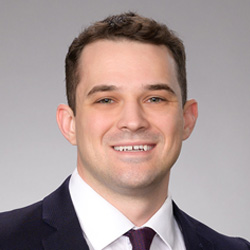Publisher’s note: Readers of several years will realize I’ve been commenting on the Brown Act for several years. It is an important tool in the citizen’s kit for preserving transparency. We thank Max Thiele and the firm of Somach Simmons & Dunn for permission to reprint this report from their website. – DA Wright
Senate Bill 707 (“SB 707” or “the bill”) was signed into law by Governor Newsom earlier this month and will bring significant changes to the Brown Act (Gov. Code, § 54950 et seq.) and how public agencies conduct their meetings beginning in 2026. The changes are intended to increase public participation and expand remote teleconferencing access. This alert will focus on some of the key changes.
meetings beginning in 2026. The changes are intended to increase public participation and expand remote teleconferencing access. This alert will focus on some of the key changes.
Eligible Legislative Bodies
Significantly, SB 707 distinguishes between those changes applicable only to an “eligible legislative body” and those changes that apply generally to all legislative bodies subject to the Brown Act.
An “eligible legislative body” is defined as any of the following: (1) a city council of a city with a population of 30,000 or more; (2) a county board of supervisors of a county, or city and county, with a population of 30,000 or more; (3) a city council of a city located in a county with a population of 600,000 or more*; or (4) a board of directors of large special districts that meet certain criteria based on boundary area, number of employees, or annual revenue.
Remote Access Option & Policy Required
SB 707 requires eligible legislative bodies to offer remote participation in meetings. Eligible legislative bodies must include opportunities for members of the public to attend meetings via a two-way telephonic service or two-way audiovisual platform unless the technology is not available at the meeting location or an exemption applies. The eligible legislative body must also adopt a policy in case of a disruption of the telephonic or internet service. The policy must address the procedures for recessing and reconvening a meeting in the event of disruption.
Eligible legislative bodies must include opportunities for members of the public to attend meetings via a two-way telephonic service or two-way audiovisual platform unless the technology is not available at the meeting location or an exemption applies. The eligible legislative body must also adopt a policy in case of a disruption of the telephonic or internet service. The policy must address the procedures for recessing and reconvening a meeting in the event of disruption.
Outreach Requirements
Eligible legislative bodies are also required to take specific actions to encourage residents to participate in public meetings, including: (1) providing an electronic system that accepts and fulfills requests for meeting agendas and documents; (2) creating and maintaining an accessible webpage dedicated to public meetings that provides explanations on the general meeting process, how to provide in-person or remote public comments, a calendar of all public meeting dates, and the meeting agendas; and (3) undertaking reasonable efforts to invite groups that do not traditionally participate in public meetings to attend those meetings. Similarly, eligible legislative bodies also must translate meeting agendas and participation instructions into all “applicable languages” which is defined as those languages spoken by at least 20 percent of the relevant population according to the American Community Survey.
remote public comments, a calendar of all public meeting dates, and the meeting agendas; and (3) undertaking reasonable efforts to invite groups that do not traditionally participate in public meetings to attend those meetings. Similarly, eligible legislative bodies also must translate meeting agendas and participation instructions into all “applicable languages” which is defined as those languages spoken by at least 20 percent of the relevant population according to the American Community Survey.
Several provisions of SB 707 apply generally to all legislative bodies:
“Just Cause” Provisions Extended
Although the traditional rules for teleconferenced meetings remain largely unchanged, SB 707 expands the “just cause” provisions first introduced in 2022, which allow members of a legislative body to participate in a meeting remotely. The bill extends the sunset date for these to December 31, 2029.
Teleconferencing as a Reasonable Accommodation
The bill also expressly allows legislative body members to participate by teleconference as a reasonable accommodation for a disability. However, if a member does participate remotely, they must participate using both audio and visual technology, disclose if another adult is in the room with them, and provide the general nature of his/her relationship with anyone present.
Social Media Rules Extended
Existing law permits a member of a legislative body to engage in conversations or communications with the public regarding subject matters that are within the subject matter jurisdiction of the legislative body, so long as a majority of the members of the legislative body do not use the social media platform to discuss these matters among themselves. SB 707 extends this exception indefinitely.
Mandatory Brown Act Distribution
Existing law permits agencies to provide copies of the Brown Act to each member of the legislative body. However, under the provisions of SB 707, agencies will be required to provide a copy of the Brown Act to any person elected or appointed as a member of a legislative body.
Exemptions to Public Comment
Under existing law, a legislative body may only skip public comment for certain items already considered by a prior committee comprised exclusively of legislative body members. However, under SB 707 an opportunity for public comment on an item does not need to be provided if: (1) the item has not been substantially changed since the committee heard the item; (2) the prior committee meeting had a physical, in-person quorum; and (3) the committee does not have primary jurisdiction over certain sensitive or high interest areas (e.g., elections, budgets, privacy, etc.).
Authority to Remove Disruptive Participants
The bill extends legislative bodies’ authority to remove or limit participation from individuals engaging in disruptive behavior, regardless of whether the individual is attending the meeting in person or remotely.
If you have questions regarding the upcoming changes to the Brown Act and how to comply with the new requirements, please contact:
Max W. Thiele, mthiele@somachlaw.com or Alexis K. Stevens, astevens@somachlaw.com
Somach Simmons & Dunn provides the information in its Environmental Law & Policy Alerts and on its website for informational purposes only. This general information is not a substitute for legal advice, and users should consult with legal counsel for specific advice. In addition, using this information or sending electronic mail to Somach Simmons & Dunn or its attorneys does not create an attorney-client relationship with Somach Simmons & Dunn.
Alerts and on its website for informational purposes only. This general information is not a substitute for legal advice, and users should consult with legal counsel for specific advice. In addition, using this information or sending electronic mail to Somach Simmons & Dunn or its attorneys does not create an attorney-client relationship with Somach Simmons & Dunn.
DISCLAIMER OF RESPONSIBILITY; Waterwrights.net strives to provide its clients with the most complete, up-to-date, and accurate information available. Nevertheless, Waterwrights.net does not serve as a guarantor of the accuracy or completeness of the information provided, and specifically disclaims any and all responsibility for information that is not accurate, up-to-date, or complete. Waterwrights.net’s clients therefore rely on the accuracy, completeness and timeliness of information from Waterwrights.net entirely at their own risk. The opinions expressed in this report are those of the author and do not represent any advertisers or third parties.
ALL RIGHTS RESERVED. Copyright 2025 by WaterWrights.net
*Did a little research and in the San Joaquin Valley only San Joaquin, Kern and Fresno Counties have a population of more than 600,000. In the Sacramento Valley only Sacramento County meets the 600,000 population criteria.

































